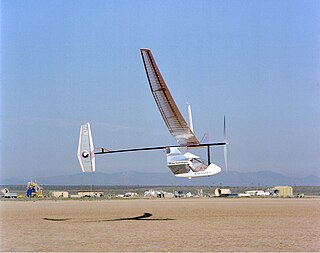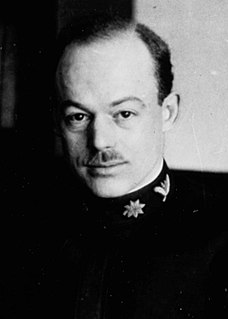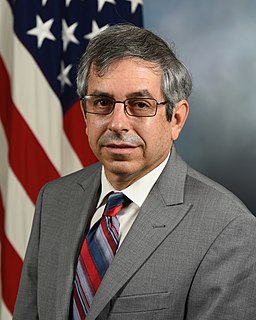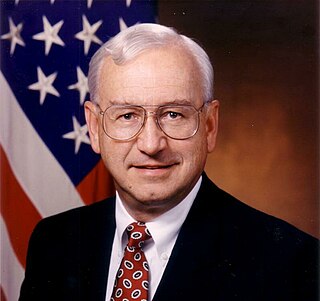Related Research Articles

Frederick Hamilton "Rick" Hauck is a retired captain in the United States Navy, a former fighter pilot and NASA astronaut. He piloted Space Shuttle mission STS-7 and commanded STS-51-A and STS-26.

The American Institute of Aeronautics and Astronautics (AIAA) is a professional society for the field of aerospace engineering. The AIAA is the U.S. representative on the International Astronautical Federation and the International Council of the Aeronautical Sciences. In 2015, it had more than 30,000 members among aerospace professionals worldwide.
The National Aeronautic Association of the United States (NAA) is a non-profit 501(c)(3) organization and a founding member of the Fédération Aéronautique Internationale (FAI). Founded in 1905, it is the oldest national aviation club in the United States and one of the oldest in the world, it serves as the “Aeroclub of the United States” and, by its Mission Statement it is "…dedicated to the advancement of the art, sport and science of aviation in the United States.” The NAA is headquartered at the Ronald Reagan Washington National Airport, in Washington, D.C.

The MIT Aeronautics and Astronautics Department's Daedalus was a human-powered aircraft that, on 23 April 1988, flew a distance of 72.4 mi (115.11 km) in 3 hours, 54 minutes, from Heraklion on the island of Crete to the island of Santorini. The flight holds official FAI world records for total distance, straight-line distance, and duration for human-powered aircraft.

Jerome Clarke Hunsaker was an American naval officer and aeronautical engineer, born in Creston, Iowa, and educated at the U.S. Naval Academy and the Massachusetts Institute of Technology. His work with Gustav Eiffel outside Paris led to the first wind tunnel in the US at MIT. He was instrumental in developing a weather reporting and airway navigation. Hunsaker was also pivotal in establishing the theoretical and scientific study of aerodynamics in the United States. And he was primarily responsible for the design and construction of the Navy-Curtiss airplane (NC-4) that accomplished the first transatlantic flight, and the first successful shipboard fighter. Later he championed lighter-than-air flight but the loss of the Navy airship he designed, the USS Akron, led to the withdrawal of federal support. His WW2 chairmanship of the National Advisory Committee for Aeronautics (NACA) was notable for favouring the development of existing aircraft designs rather than experimenting with turbojets or missile technology.
Daniel P. Raymer is an aerospace design engineer widely recognized as an expert in the fields of aircraft conceptual design, design engineering, aircraft configuration & layout.
Maxwell White Hunter II was a prominent American aerospace engineer. He worked on the design of the Douglas B-42 and Douglas B-43 bombers, the Honest John, Nike-Ajax, and Nike-Zeus missiles, the Thor IRBM, and on parts of the Strategic Defense Initiative. In later years he worked on space-launch vehicles and was a proponent of Single-stage-to-orbit (SSTO) designs. He was honored in 1995 by the National Space Society for lifelong contributions to the technology of spaceflight.
Michimasa Fujino is a Japanese aeronautical engineer, entrepreneur, and retired founding president and CEO of the Honda Aircraft Company, a subsidiary of the Honda Motor Company. Fujino worked as chief engineer within Honda R&D, then as vice president, before he was named the project leader for HondaJet development. He was also a Honda Motor managing officer. At Honda Aircraft, he played a crucial role in the growth of the company, and was responsible for the overall strategy of its design, development, certification, marketing, sales, and production of the HondaJet.

Guy Antony Jameson, FRS, FREng is Professor in the Department of Aerospace Engineering at Texas A&M University. Jameson is known for his pioneering work in the field of computational fluid dynamics. He has published more than 300 scientific papers in a wide range of areas including computational fluid dynamics, aerodynamics, and control theory.
Jan Roskam is the emeritus Deane E. Ackers Distinguished Professor of Aerospace Engineering at the University of Kansas. He is the author of eleven books on airplane design and flight dynamics and over 160 papers on the topics of aircraft aerodynamics, performance, design and flight controls. He founded the company DARcorporation with Willem Anemaat.
Nancy G. Leveson is an American specialist in system and software safety and a Professor of Aeronautics and Astronautics at MIT, United States.

William H. Gerstenmaier is an aerospace engineer and policymaker who is Vice President, Build and Flight Reliability at SpaceX. He previously served as NASA's Associate Administrator for Human Exploration and Operations between 2005 and July 10, 2019. While in that role, he was described as "arguably the most influential person when it comes to US spaceflight." Prior to being Associate Administrator, Gerstenmaier served as the International Space Station Office Program Manager, at Johnson Space Center, a position he began in June 2002. He spent a total of four decades with NASA.

Dr. Mark J. Lewis is a senior American aerospace and defense executive with special expertise in hypersonics. He is currently the Executive Director of the National Defense Industrial Association's Emerging Technologies Institute, following his role in the second half of 2020 as the acting US Deputy Under Secretary of Defense for Research and Engineering, and before that the Director of Defense Research and Engineering for Modernization. He was the Chief Scientist of the U.S. Air Force, Washington, D.C. from 2004 to 2008 and was the longest-serving Chief Scientist in Air Force history. He served as chief scientific adviser to the Chief of Staff and Secretary of the Air Force, and provided assessments on a wide range of scientific and technical issues affecting the Air Force mission. In this role he identified and analyzed technical issues and brought them to attention of Air Force leaders, and interacted with other Air Staff principals, operational commanders, combatant commands, acquisition, and science & technology communities to address cross-organizational technical issues and solutions. His primary areas of focus included energy, sustainment, long-range strike technologies, advanced propulsion systems, and workforce development.
John H. McMasters was an aeronautical engineer notable for his contributions to aerodynamics and engineering education.
William Rees Sears was an aeronautical engineer and educator who worked at Caltech, Northrop Aircraft, Cornell University, and the University of Arizona. He was an editor of the Journal of the Aeronautical Sciences from 1955 to 1963 and the founding Editor of the Annual Review of Fluid Mechanics in 1969.
John L. Junkins is a professor of aerospace engineering at Texas A&M University specializing in spacecraft navigation, guidance, dynamics and control. He holds the Royce E. Wisenbaker Endowed Chair at Texas A&M University and also serves as the founding director of the Texas A&M University Institute for Advanced Study. On November 24, 2020, Junkins was announced as the interim president of Texas A&M starting January 2021.

Paul Garrett Kaminski is a technologist and former U.S. government official, best known for his leading role in the development of stealth aircraft.
Holt Ashley was an American aeronautical engineer notable for his seminal research of aeroelasticity.

Robert E. "Rob" Meyerson is an American aerospace engineer and executive known for his role in the development of reusable rocket launch systems.
Karen Elizabeth Willcox is an aerospace engineer and computational scientist best known for her work on reduced-order modeling and the study of multi-fidelity methods. She is currently the director of the Oden Institute for Computational Engineering and Sciences and professor of Aerospace Engineering and Engineering Mechanics at the University of Texas at Austin, Texas.
References
- ↑ Jennifer Buske (May 4, 2008). "Firm Hopes Its Aircraft Design Will Launch a New Era". The Washington Post.
- ↑ Peter A. McKay (June 10, 1998). "Manassas Firm Strives to Soar in Its Niche; Specializing in Planes for Research Helps Aurora Flight Sciences Take Off". The Washington Post.
- ↑ Robbie Ward (July 7, 2006). "Aurora breaks ground on $3M plant". Northeast Mississippi Daily Journal.
- ↑ Kris Miller (March 2, 2004). "Aurora President John Langford Selected as Virginia's Outstanding Industrialist for 2004". Aurora Flight Sciences. Archived from the original on December 9, 2010. Retrieved July 5, 2012.
- ↑ "Langford Elected as Next President of AIAA". Prnewswire.com. 12 April 2017. Retrieved 19 July 2018.